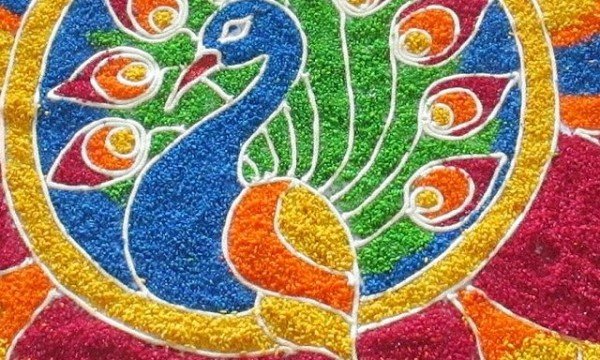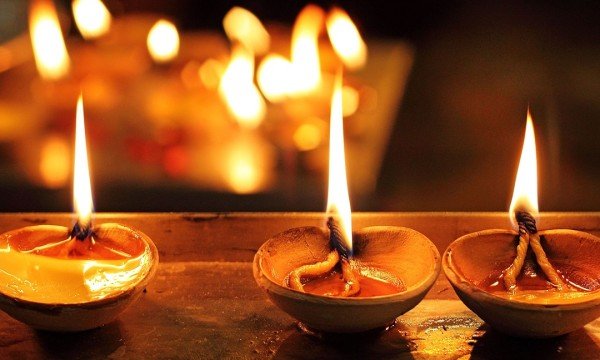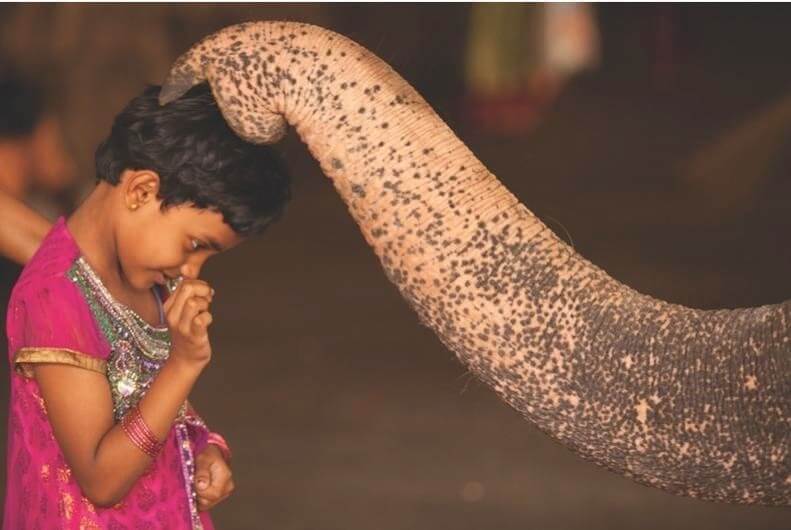
myTamilDate.com has been the most trusted dating community for single Tamils around the world for close to a decade! We’re the premiere dating site for diaspora Tamils and have the largest membership base in Canada, USA, UK & more.
Get to know our other success stories here.
____
Every time I visit a temple in the Tamil homeland, I am awestruck to witness a magnificent beast – the elephant. It is there standing humbly inside the temple complex to bless the believers. I am totally afraid to go near it, despite my children being blessed by the elephant.
Tamils were one of the earliest tribes to have mastered the domestication of the elephant. Tholkaapiam (an anthology of ethnolinguistic anthropological work on the Tamil people) explains elephant herding and the taming of the wild beast. It gives the name Pagan to the elephant herder.
A cave painting discovered recently in Dindukal, Tamil Nadu depicting the elephant trapping and taming scenario of the Sangam age lended further enthusiasm to Tamil researchers. This leads to the inference that the domestication of elephants was known in the Tamil world from time immemorial.
The elephant herders’ instrument to control the beast is known as ankus in Indo-European languages. It might have derived from the Tamil root word ankusum meaning curved at the summation (anku = curved/bend/angled, sum = summation/pinnacle/tip).
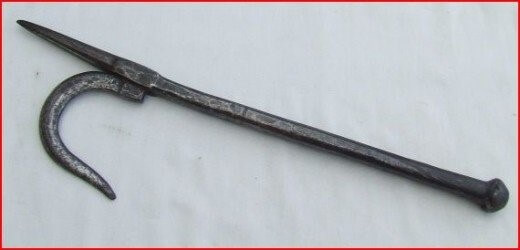
The relationship between the elephant and its pagan is very personal. The most efficient pagan will never use the pointed end of the ankusum against his elephant. It is simply a symbol of authority to which the elephant submits itself.
Part of the training for the battle elephant is to get used to battlefield bombastics. Getting used to horses in the battlefield is also part of the training required for battlefield elephants. If it happens that the mahout dies in war, the elephant seldom leaves its body.
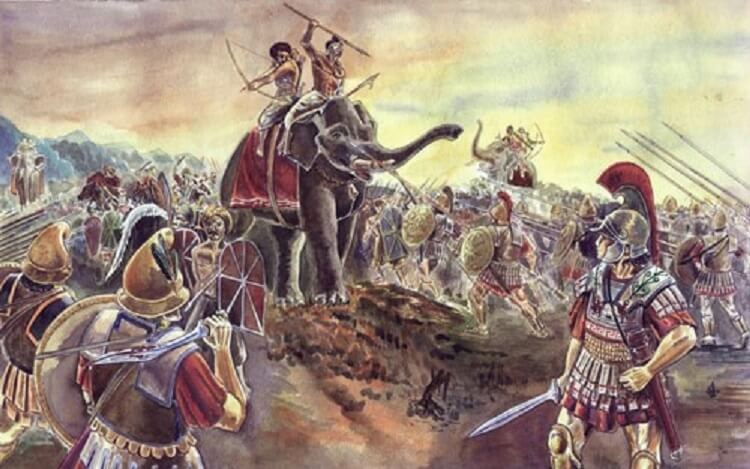
The West was unaware of elephant brigades until Alexander the Great was intimidated in his Indian campaign by elephants in the cavalry. During the same epoch, there appears to be a Chera King of the Tamil land who held numerous elephants in his elephant brigade. He is called after his elephant brigade in Sangam literature as Palaanai Selkelzhu Kuttuvan (Kuttuvan, who had an elephant brigade “the size of the clouds”).
From a historical perspective, most Tamil kings have had a royal elephant and an elephant brigade of various sizes. At the height of Tamil glory, Rajaraja the Great had 60,000 elephants in his brigade. His son, Rajendra I, had the naval capacity to transport this brigade to the Malaysian coast of Kedah and Jawa in Indonesia. This was done to conquer the Sri Vijaya kingdom and gain maritime control of Southeast Asia.
Among the Tamil kings, Thalaiyalanganathu Seruvendra Pandya Nedunchelzhian (Neduchelzhian who conquered the enmity at Thalaiyalanganam) seems to have a unique elephant called Kadumpakattu Yaanai as his royal elephant. This elephant was the alpha male among his elephant brigade. It was known to move swiftly at high speed in the battlefield. It obeyed the command of going knee-down and retrieving backwards as a mark of respect to the mortally wounded enemy king who lost the battle.
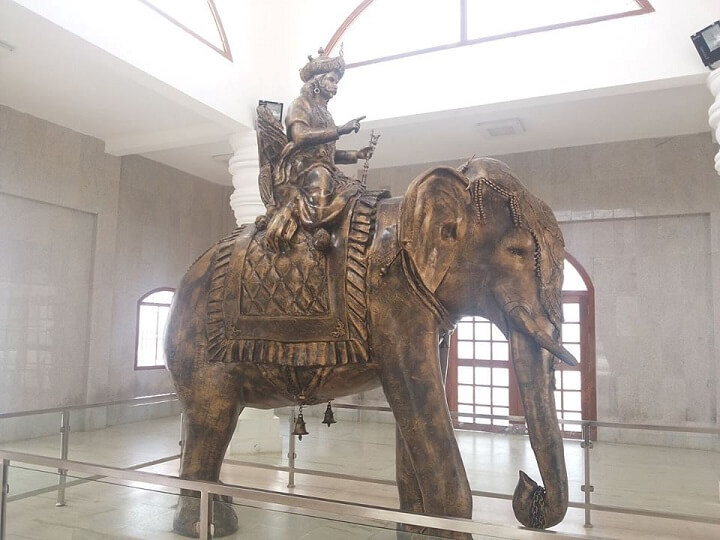
This heroic incident was recorded in Sangam literature (Puranaanuru poem 308). Elephants are represented in Sangam literature with 12 different types of names. It is often used as a metaphor to compare its actions to the actions of the protagonist in their epics. In ancient times, elephants were often bestowed by kings to the bards for their academic work.
The tradition of singing the valor of the king in Parani meter was considered the pinnacle of their reign. Parani is considered one of 96 minor literary genres collectively known as Sittrilakkiyam in Tamil literature. The most famous Kaligathuparani was a work done by the Bard Seyamkondaar, and sings the victory of King Kulothunga Cholzhan and his General Karunaakara Thondaimaan which appeared around 1100 CE. To qualify for a Parani, one’s army must have slayed a thousand elephants in the battlefield.
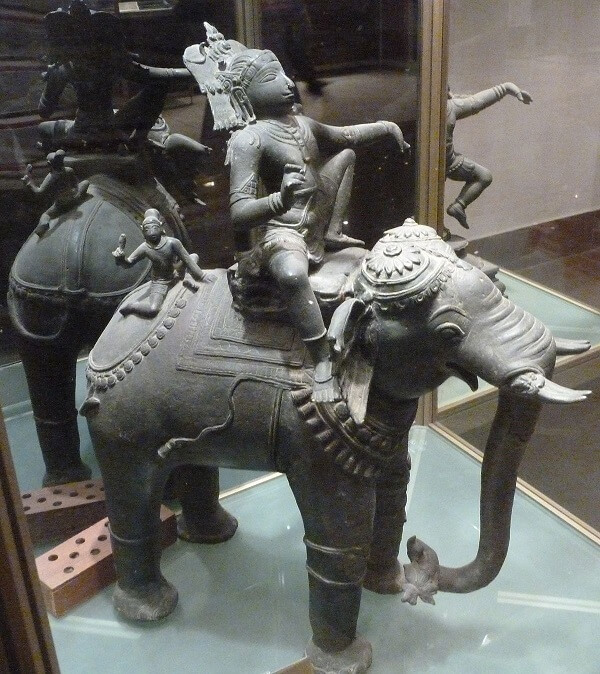
The chief architect Rajaraja Perunthatchan of Thanjai Periakovil (1002 CE) was adorned with the title Kunjaramallan, meaning elephant wrangler. He was a master elephant trainer to have used them in his massive construction project.
In conclusion, Tamils were likely among the first tribes to have domesticated elephants. Tamil civilization and the gentle elephants were in a relationship from time immemorial. Remnants of this symbiotic relationship can still be seen in temples today.
– Dr. Prem Shanmugam
Related articles:
http://tamilculture.com/is-tamil-going-extinct/
http://tamilculture.com/diversity-amongst-tamil-diaspora-ethno-linguist-population-group/
http://tamilculture.com/parai-mother-percussion-instruments-peoples-music-unify-tamil-diaspora/
**Looking to create your love story? Join the other couples who have dated and married through myTamilDate.com!**
"myTamilDate Love Story: Jenani & Nav Found Each Other At The Right Time And Right Place In Life"
"myTamilDate.com Love Story: Tharshi & Ravi Found Love During Lockdown"







